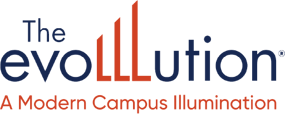Published on
Breaking Down Barriers in Curriculum Management

Institutions are experiencing increasing pressure to align academic offerings with both student expectations and workforce needs, which requires a shift from rigid, outdated processes to responsive, data-informed frameworks that can evolve in real time with external demands. In this interview, Maria Puzziferro discusses curriculum bottlenecks and leveraging data for governance.
The EvoLLLution (Evo): Can you describe what effective curriculum governance looks like at a modern institution today?
Maria Puzziferro (MP): First, it’s helpful to define curriculum governance, as this term is sometimes misunderstood. Curriculum governance refers to the structures, processes and policies an institution employs to govern the development, approval, implementation, assessment and continuous improvement of academic programs and courses.
Curriculum governance’s overarching goals are to ensure academic offerings align with the institutional mission, are compliant with accreditor standards and respond to both student and employer needs. Today’s complex higher education environment makes achieving these goals quite challenging, as we navigate shifts in enrollment and demographics, evolving industries and a highly uncertain regulatory and accreditation landscape. Thus, a modern curriculum governance framework continuously adapts to external demands while balancing internal consistency, coherence and quality.
So, what does this look like in practice?
Of course, clearly defined structures and efficient workflows with shared ownership among curriculum stakeholders, like program leaders, faculty and administrative departments, are a hallmark of effective curriculum governance. However, formalized processes often become entrenched and complex to adjust, especially in higher education.
To remain student-centered and market-responsive, a continuous flow of external business analytics must inform modern curriculum governance. These analytics must include data on student demographics, industry trends and the evolving accreditation and compliance landscape. Equally important is a formal mechanism to regularly analyze these insights within an institutional culture that values adaptability and is open to change.
Evo: What are the most common bottlenecks academic teams face in curriculum approvals and catalog updates? And what impact do these delays have on students?
MP: When bottlenecks occur in curriculum approvals and catalog updates, the implications are far-reaching for students who may experience a lack of clarity in planning their academic journeys. Delays can create confusion around course availability, hinder timely academic planning and lead to cascading consequences such as extended time to graduation, loss of financial aid eligibility and missed licensure deadlines in regulated fields like healthcare.
The most common overall bottleneck is a perfect storm of factors: unclear or complex bureaucratic approval pathways, manual workflows, poor or strained communication between departments and a lack of synchronization between academic and operational calendars.
Bottlenecks often originate within academic departments, where faculty are responsible for overseeing curriculum under regional and programmatic accreditation standards. They are typically entrusted with initiating curricular changes. However, faculty members often face significant barriers to maintaining responsive and market-aligned curricula, such as competing demands on their time from teaching, research and service; limited access to timely, actionable labor market data; and the resource-intensive nature of curriculum development and revision. Even when faculty are highly motivated, the process of redesigning programs to reflect emerging trends such as digital health, interprofessional collaboration or health equity can be slow and siloed without the proper support and time.
Evo: How can technology help institutions move from reactive curriculum changes to a proactive, market-aligned governance model?
MP: Technology plays a vital role by providing a centralized, digital platform for curriculum management that can help address the bottlenecks mentioned above. For example, a curriculum governance technology solution promotes visibility, transparency and accountability as proposals move through the system, providing version control and automating workflow.
However, technology is merely a tool. We must outline sound, transparent and replicable business processes first, then implement the appropriate technology to support those processes. The most effective platforms support, not replace, strategic decision making by aligning with well-defined governance structures.
Importantly, technology also cannot create an institutional culture of market responsiveness. While some platforms offer valuable tools to monitor labor market trends, student outcomes and demographic shifts, it is ultimately institutional leaders’ responsibility to interpret this data and act upon it. A truly proactive, market-aligned governance model requires an agile, data-informed and outward-looking institutional mindset that is committed to meeting evolving student and workforce needs.
Evo: What strategies can academic leaders use to ensure transparency, consistency and accountability across cross-functional curriculum teams?
For us at the University of St. Augustine for Health Sciences, market relevance is critical, as we not only deliver value to students but also serve our communities by educating exceptional healthcare practitioners who will serve and lead the healthcare of the future. So, agility, speed and adaptability to student needs are not luxuries but essential. In healthcare education, the pace of change is relentless. New technologies, shifting care models, evolving licensure requirements and workforce shortages all demand that academic programs stay closely aligned with the realities of clinical practice. We therefore can’t react. We must lead.
The first strategy I recommend is establishing structured mechanisms for collecting, analyzing and leveraging business intelligence related to market data. These include systems to gather insights from labor market analytics, employer feedback, alumni outcomes and emerging industry trends. A centralized and dedicated business intelligence function ensures the data is regularly synthesized and shared with academic leaders and faculty. By embedding this intelligence into the educational planning, cultural dialogue and program development process, we create a culture of reflection and market responsiveness. We can then proactively align offerings with workforce needs, anticipate areas of growth and respond swiftly to changes in demand.
Next, it’s equally important to create space for forward-thinking innovation through councils or academic think tanks that utilize data to anticipate what’s next. The goal is not only to adapt to current market needs but to shape the future. We can then thoughtfully integrate these insights into curricula to ensure students are equipped not only with today’s essential skills but also with the competencies to lead innovation.
Third, faculty need dedicated time, space and support to engage meaningfully with market data and translate it into programmatic improvements. While the exact approach may vary based on institutional culture, certain principles are universal: Faculty must have timely access to relevant data, sufficient time to analyze it and the resources to innovate based on their findings. Most importantly, the work of curriculum development should be fully integrated into the faculty workload model, not regarded as extra or peripheral. The time and effort required to revise curricula and redesign learning experiences must benefit from institutional leadership’s recognition, valuation and intentional support.
Fourth, higher education is inherently bureaucratic, with multiple layers of review and approval built into nearly every process. As a result, there is often an implicit belief that the more time something takes and the more people are involved, the higher the quality of the outcome. It’s time to challenge that assumption. Institutions should intentionally design internal review workflows that strike a balance between quality and efficiency. Timeliness does not need to come at the expense of rigor, and with the right structures in place we can produce thoughtful, high-impact work without unnecessary delays.
Finally, when an institution embraces a market-responsive mindset, provides access to timely and relevant data, allocates protected time for faculty to engage in meaningful curricula-related work and streamlines its internal processes, it is then well positioned to select a technology platform that effectively supports and enhances its curriculum governance efforts.
Evo: How can academic affairs teams balance academic rigor with the operational need for speed in launching new programs?
MP: The need for speed is not optional. It truly is a need. Moreover, it’s a defining imperative of modern higher education. To remain relevant and deliver on our mission, we must evolve, adapt and move with the velocity of change. Hesitation risks irrelevance. Agility is the new standard.
We must begin to challenge the assumption that longer timelines and more layers of review automatically equate to higher quality. Academic leaders play a critical role in shaping this culture and mindset with their teams. By setting clear expectations and designing processes that prioritize both quality and efficiency, we can foster a culture that is agile, responsive and aligned with the pace of change in today’s world.



